 September 19, 2019 John E. Ross, KD8IDJ, Editor
| ||||||
ARRL Renews Request for FCC to Replace Symbol Rate with Bandwidth Limit In ex parte comments filed on September 17 in WT Docket 16-239, ARRL renewed its request that the FCC delete symbol rate limits below 29.7 MHz for data transmissions in the Amateur Service rules. As it did in its initial filing, ARRL asked the FCC to couple the removal of the symbol rate limits with the adoption of a 2.8 kHz bandwidth limit. "This proceeding addresses an update to the Commission's rules that is needed because a limitation in the rules unintentionally is inhibiting US amateurs from employing the latest improvements to some of the digital modes," ARRL said in its remarks. "Data signals commonly used for daily communications as well as in disaster situations have bandwidths in the range of 2.5 kHz and must co-exist with other modes that use bandwidths as narrow as 50 Hz." ARRL said the 1980s-era symbol rate limits today inhibit the use of some efficient data modes. Repealing the symbol rate limit, ARRL contended, would "allow shortened transmission times for the same amount of data without increasing the bandwidth occupied by the signal. Other Amateurs would benefit by the resulting reduction in potential interference." Other Issues ARRL's remarks also addressed issues raised by other parties. "Discussion by commenters in this proceeding delve into subjects well beyond its scope," ARRL said, noting that it had attempted to broker consensus among "some of the most active commenters" with an eye toward exploring possible areas of agreement for the FCC's consideration. ARRL noted that the parties to the ARRL-arranged talks One of those issues involves Automatically Controlled Digital Stations (ACDS). Commenters' concerns focused on interference that could occur with a move away from symbol-rate criteria. ACDS with signals wider than 500 Hz below 29.7 MHz are confined to specific subbands. ARRL recommended that the FCC consider rules changes that would have all ACDS stations and digital stations with bandwidths greater than 500 Hz share identified subbands. ARRL said if additional signals are added to the ACDS subbands, as recommended, that it would strongly support expanding the HF ACDS subbands. But, the League added, "changing the subband boundaries requires study and careful consideration of trade-offs, because any changes will affect multiple user interests." ARRL referred subband reformulation issues to its HF Band Planning Committee for study and recommendations. Some commenters also raised the issue of obscure and encrypted messages. ARRL pointed out in its ex parte remarks that it remains opposed to encryption in the amateur bands, but disagreed "with commenters who argue that the digital modes being used by radio amateurs around the world are per se 'obscured' or 'encrypted.'" Read more. Ad Hoc Legislative Advocacy Committee to Meet with Lawmakers ARRL's Ad Hoc Legislative Advisory Committee will meet with several members of Congress later this month in Washington to introduce new Committee members, reacquaint the lawmakers with Amateur Radio's most-pressing issues, seek their input on the best ways to achieve ARRL's objectives in Congress, and request their continuing support. Committee members have completed a The Committee has contracted with The Keelen Group to provide advice and recommendations regarding ARRL's legislative relationships. Keelen Group advisors also will aid in organizing and guiding the meetings between ARRL representatives and key congressional allies in support of Amateur Radio initiatives. On June 12, the Legislative Advisory Committee held the first of a series of meetings in DC with ARRL Washington Counsel David Siddall, K3ZJ, The Keelen Group, and a small contingent of radio amateurs associated with various governmental and nongovernmental partners to solicit their perspectives and assistance in charting a future course of action. Pacific Division Director and Committee Chair Jim Tiemstra, K6JAT, described these individuals a "critical allies in ARRL's efforts to achieve its legislative objectives." The process of analyzing and clarifying ARRL's aims began when the Committee was reconstituted with new members at the ARRL Board of Directors' January meeting. The Board had determined a need to "review, reexamine, and reappraise the ARRL's regulatory and legislative policy with regard to private land-use restrictions," with the aim of renewing, continuing, and strengthening ARRL's effort to achieve relief from such restrictions. "There seems to be no countervailing policy that could justify arbitrary conditions, covenants and restrictions," Tiemstra said. "Indeed, public policy should clearly favor the needs of the Amateur Radio operator." Amateur Radio's role in public service and emergency communication will be the Committee's strongest argument in seeking relief from private land-use restrictions that limit amateurs' ability to operate effectively. The Committee will analyze the outcomes of this month's meetings and draft a report with recommendations for the ARRL Executive Committee to review and consider at its October 12 meeting. The full Board is expected to take up the issue at its January 2020 meeting. A Radio on Your Belt -- 1930s Style Since the advent of wireless technology, efforts have aimed at condensing the size of the necessary equipment to permit ease of transport, mobile installation, and radios that could be hand carried, slipped into a pocket or -- in this case -- carried on the belt. Hugo Gernsback's Radio-Craft for December 1936 included the article, "How to Make the World's Smallest 3-Tube Radio Set" by Arthur Miller (likely not the playwright). It details how a clever radio crafter could construct a set worn on a belt around the waist and -- in this case -- with the antenna worn on the head in the Vacuum tubes of the day were not too sensitive, required separate voltage sources for filament and plate, and were pretty hard on batteries. The filaments for the three tubes came from "a liquid unspillable storage cell" (i.e., rechargeable) to supply the necessary 2 V. The article says this battery should last from 7 to 10 hours and came "with an oiled silk bag and fits in the hip pocket." This was the sort of futuristic innovation that Gernsback typically featured in his publications, and the entire December 1936 issue of Radio-Craft is worth perusing. "When using this 'Belt-Radio' the wearer is quite unmindful that the latest news or dance music is coming from an ultra-midget receiver which is actually being worn on the belt!" the article exults. "And it takes only a minute to put the whole equipment on -- and less to take it off!" According to Miller's article, building the three-tube set was easy. "The The article concedes just to "one disadvantage" in having to wear the antenna on one's head. "The 4-ft. cable connecting it with the receiver acts as a capacity and restricts the tuning range of the set," it explains. The set tuned the AM broadcast band, and with the antenna on the head, directionality was less of an issue. While it might look silly to us now, project ideas such as this helped advance the radio art toward the technology we use and enjoy today. So Now What? Podcast "Demystifying the Language of Morse Code" is the focus of the new (September 19) episode of the So Now What? podcast for Amateur Radio newcomers.
So Now What? is sponsored by LDG Electronics, a family owned and operated business with laboratories in southern Maryland that offers a wide array of antenna tuners and other Amateur Radio products. ARRL Communications Content Producer Michelle Patnode, W3MVP, and ARRL Station Manager Joe Carcia, NJ1Q, co-host the podcast. Presented as a lively conversation, with Patnode representing newer hams and Carcia the veteran operators, the podcast will explore questions that newer hams may have and the issues that keep participants from staying active in the hobby. Some episodes will feature guests to answer questions on specific topic areas. Listeners can find So Now What? on Apple iTunes, Blubrry, Stitcher (free registration required, or browse the site as a guest) and through the free Stitcher app for iOS, Kindle, or Android devices. Episodes will be archived on the ARRL website. Amateur Radio Digital Communications Announces Grant to ARISS Amateur Radio Digital Communications (ARDC) has announced what's being called "a very generous grant" to Amateur Radio on the International Space Station (ARISS) to help fund its next-generation Interoperable Radio System (IORS) and associated infrastructure "This was fantastic news!" said ARISS International Chair Frank Bauer, KA3HDO, who expressed appreciation for ARDC's generosity. Bauer said the ARDC gift would go a long way toward covering the considerable cost of making the IORS a reality. ARISS said its next-generation IORS will "enable new, exciting capabilities for hams, students, and the general public." It also plans additional enhancements, which would include:
The ARISS International team has already begun planning for an Amateur Radio role for NASA's Lunar Gateway initiative. Some ARDC board members have expressed an interest in ARISS's future plans involving the Lunar Gateway program, ARISS said. The donation to ARISS is the first since ARDC announced its grant program earlier this summer. ARISS invites contributions via its website. Read more. The K7RA Solar Update Tad Cook, K7RA, Seattle, reports: No sunspots again this week, and as of Wednesday, we've seen 15 spotless days in a row. This is the solar minimum. The current Cycle 24 is expected to end by year's end.
Predicted solar flux is 68 on September 19 - 26; 69 on September 27 - October 6; 70 on October 7; 68 on October 8 - 19, and 69 on October 20 - November 2. Predicted planetary A index is 5 on September 19 - 21; 8 on September 22 - 23; 5 on September 24 - 26; 35, 45, 20, and 10 on September 27 - 30; 8, 10, and 8 on October 1 - 3; 5, 5, and 12 on October 4 - 6; 5 on October 7 - 9; 8, 5, and 8 on October 10 - 12; 5, 8, and 10 on October 13 - 15; 5 on October 16 - 19; 8, 5, and 5 on October 20 - 22; 8, 25, 30, and 18 on October 23 - 26; 8, 5, and 8 on October 27 - 29; 5 on October 30 - November 1, and 12 on November 2. Sunspot numbers for September 12 - 18 were 0, 0, 0, 0, 0, 0, and 0, with a mean of 0. The 10.7-centimeter flux was 69.4, 68.3, 68.6, 67.7, 68.7, 67.5, and 66.3, with a mean of 68.1. Estimated planetary A indices were 7, 8, 6, 8, 11, 9, and 9, with a mean of 8.3. Middle latitude A index was 7, 8, 7, 8, 10, 8, and 8, with a mean of 8. A comprehensive K7RA Solar Update is posted Fridays on the ARRL website. For more information concerning radio propagation, visit the ARRL Technical Information Service, read "What the Numbers Mean," and check out K9LA's Propagation Page. A propagation bulletin archive is available. Monthly charts offer propagation projections between the US and a dozen DX locations. Share your reports and observations. Just Ahead in Radiosport
See the ARRL Contest Calendar for more information. For in-depth reporting on Amateur Radio contesting, subscribe to The ARRL Contest Update via your ARRL member profile email preferences. Festival of Frequency Measurement Set to Honor WWV Centennial HamSCI and the Case Amateur Radio Club of Case Western Reserve University (W8EDU) will sponsor a "Festival of Frequency Measurement" on the day of WWV's centennial, October 1, from 0000 to 2359 UTC (starting on Monday evening, September 30, in the Americas). The event invites radio amateurs, shortwave listeners, and "Changes in ionospheric electron density caused by space weather and diurnal solar changes are known to cause Doppler shifts on HF ray paths," the event announcement says. "HamSCI's first attempt at a measurement of these Doppler shifts was during the August 2017 total solar eclipse. We plan a careful measurement during the 2024 eclipse." Some of the questions the research event is hoping to answer include how WWV's 5 MHz propagation path varies over a given calendar day, and how various measurement techniques for understanding the path variations compare. The objectives are to measure Doppler shifts caused by the effect of space weather on the ionosphere, and to use a specified measurement protocol available to Amateur Radio operators and other citizen-scientists. The experiment will use August 1, 2019 (UTC) as a control date. "The recordings in this experiment are expected to show formations of the D-layer at stations' local sunrise and other daily events of the ionosphere," the announcement said. "Space weather varies day to day and some features may be prominent. We'll see what we get!" Full information is on the Festival of Frequency Measurement website. Mount Diablo Amateur Radio Club Assisting in Restoring Fire-Damaged Repeaters The Mount Diablo Amateur Radio Club (MDARC) Disaster Recovery Program for the 2018 Carr and Camp Fires has made a $1,000 grant to the California Amateur Radio Linking Association (CARLA) toward the cost of rebuilding one of its destroyed sites. The CARLA network of repeaters provides coverage across California and western Nevada to "We are extremely pleased and honored to have been the recipient of MDARC's generosity through this initiative," said Tom Naso, N6MVT, one of the founders of CARLA. "Our loss of CARLA system 25 in the Redding area was a huge hit for us. Not only was it a high-level repeater site that covered a lot of territory, but it was also a north-south relay site that connected our primary Bay Area hub to our Shasta Area hub, so it was a big deal on many levels when it went down that fateful day." Naso said CARLA, based in the Bay Area, has systems throughout California and parts of Nevada. The MDARC grant will make "a considerable dent in the outlay of cash in procuring new equipment to replace what burned," he said. "We don't have insurance on the equipment because of how many sites we have. It just becomes cost prohibitive." The MDARC Board of Directors has established a fund to assist organizations that have suffered ham system losses as a result of the Carr and Camp Fires, and it continues to seek additional clubs with fire-damaged systems that may require financial aid to rebuild. MDARC recognizes that many of these repeater systems are in critical areas that otherwise have very little Amateur Radio or cellular coverage and are vital in providing important disaster traffic. Contact the club for more information. -- Thanks to ARRL East Bay Section Manager Jim Siemons, W6LK, and Tom Naso, N6MVT Well-Known Yukon Ham J Allen, VY1JA, is Stepping Away from Amateur Radio Well-known Canadian radio amateur J Allen, VY1JA, of Whitehorse, Yukon Territory, has announced that he's retiring from ham radio, citing long-term health issues and hearing loss. The familiar VY1JA call sign also has been retired. Allen will begin dismantling his station and antennas as early as this weekend. His last contact was with KA4UPI on September 14. He has uploaded his logs to Logbook of The World (LoTW) and sent copies to his QSL managers.
For years, VY1JA was an eagerly sought-after multiplier in the ARRL November Sweepstakes and other events, as well as a needed zone in DX contests. In recent years, as Allen has begun to step away from regular on-the-air appearances, his station has been operated remotely as VY1AAA by a team of Canadian-licensed operators located in the US. Allen said VY1AAA operation would cease on September 22. Gerry Hull, W1VE/VE1RM, who has coordinated VY1AAA operations, told ARRL that he's been searching over the past 6 months for another Northern Territories station that would be willing to host remote operation. "The VY1AAA team is greatly saddened by this turn of events," Hull said. "Hams around the world will surely miss J and the VY1AAA team on the bands. J has been an incredible friend and mentor. Now it is time for us to help him off the air." Hull said that over the past 4 years, the remotely operated station has logged more than 35,000 contacts, and QSL requests will continue to be honored. He invited inquiries via email. Allen thanked Hull for "his tireless efforts to keep YT/NT/VY1 on the air throughout the years of his operation and direction of remote operations." Read more. In Brief...
Upcoming ARRL Section, State, and Division Conventions
Find conventions and hamfests in your area.
. .
Subscribe to...
Free of charge to ARRL members...
| ||||||
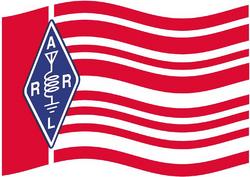 In response to ARRL's 2013 ARRL Petition for Rulemaking (
In response to ARRL's 2013 ARRL Petition for Rulemaking (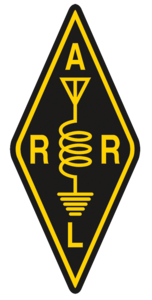 declined to forward to the FCC "joint recommendations on which conditional agreement had been reached."
declined to forward to the FCC "joint recommendations on which conditional agreement had been reached."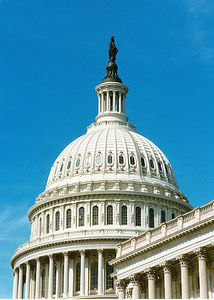 comprehensive analysis of Amateur Radio Parity Act deficiencies for dissemination to Amateur Radio's backers on The Hill. The panel now is following up on this process with the meetings later this month.
comprehensive analysis of Amateur Radio Parity Act deficiencies for dissemination to Amateur Radio's backers on The Hill. The panel now is following up on this process with the meetings later this month. manner of an old-time banker's eyeshade. The individual wearing such equipment today likely would not only have to endure considerable pointing and laughing but would raise the alert level at any airport TSA checkpoint.
manner of an old-time banker's eyeshade. The individual wearing such equipment today likely would not only have to endure considerable pointing and laughing but would raise the alert level at any airport TSA checkpoint.(1).jpg) loop aerial is wound on a cardboard disc 13 ins. in dia," it explains. "Litz wire is used and 22 turns are interlaced around the 9 ribs." No mention of gauging hat size.
loop aerial is wound on a cardboard disc 13 ins. in dia," it explains. "Litz wire is used and 22 turns are interlaced around the 9 ribs." No mention of gauging hat size. If you're a newly licensed Amateur Radio operator, chances are you have lots of questions. This biweekly podcast has answers! So Now What? offers insights from those who've been just where you are now. New episodes will be posted every other Thursday, alternating new-episode weeks with the
If you're a newly licensed Amateur Radio operator, chances are you have lots of questions. This biweekly podcast has answers! So Now What? offers insights from those who've been just where you are now. New episodes will be posted every other Thursday, alternating new-episode weeks with the  improvements and enhancements. ARISS said the IORS will replace the aging amateur stations on the ISS to ensure the continuation of its primary program that lets students speak to ISS crew members via Amateur Radio. ARDC said it believes ARISS helps to engage students with Amateur Radio and science, technology, engineering, and mathematics (STEM) in general "by providing exciting capabilities that don't exist" on cell phones or the internet. A dollar figure was not made public.
improvements and enhancements. ARISS said the IORS will replace the aging amateur stations on the ISS to ensure the continuation of its primary program that lets students speak to ISS crew members via Amateur Radio. ARDC said it believes ARISS helps to engage students with Amateur Radio and science, technology, engineering, and mathematics (STEM) in general "by providing exciting capabilities that don't exist" on cell phones or the internet. A dollar figure was not made public.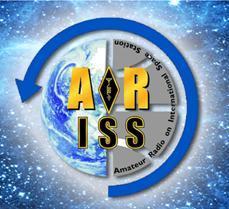 capabilities, including an enhanced voice repeater and updated digital packet radio
capabilities, including an enhanced voice repeater and updated digital packet radio The average daily solar flux dipped from 69.4 to 68.1, while average daily planetary A index declined slightly from 8.9 to 8.3, while the average daily mid-latitude A index rose from 7.7 to 8.
The average daily solar flux dipped from 69.4 to 68.1, while average daily planetary A index declined slightly from 8.9 to 8.3, while the average daily mid-latitude A index rose from 7.7 to 8.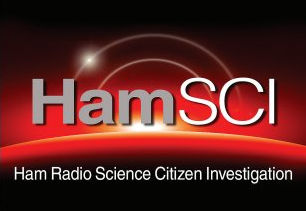 others capable of making high-quality frequency measurements on HF to participate and publish their data to the HamSCI community on the
others capable of making high-quality frequency measurements on HF to participate and publish their data to the HamSCI community on the 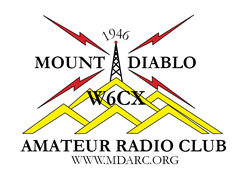 provide reliable communication during significant local, regional, and wide-area incidents.
provide reliable communication during significant local, regional, and wide-area incidents. "After approximately 30 years of operation and over 110,000 contacts, the station VY1JA has gone QRT for operator health reasons effective 2019-09-14," Allen said on his
"After approximately 30 years of operation and over 110,000 contacts, the station VY1JA has gone QRT for operator health reasons effective 2019-09-14," Allen said on his  Until October 1, WWV and WWVH are broadcasting a US Department of Defense message to mark the centennial of WWV and to announce the
Until October 1, WWV and WWVH are broadcasting a US Department of Defense message to mark the centennial of WWV and to announce the .jpg) A CubeSat with an FM-to-Codec-2 transponder has been launched. The Taurus-1 (Jinniuzuo-1) CubeSat carrying an Amateur Radio FM-to-Codec-2 transponder was launched on September 12 from China's Taiyuan Satellite Launch Center. The CubeSat was developed by Aerospace System Engineering Research Institute of Shanghai for youth education and Amateur Radio. The transponder is similar to that used on the LilacSat-1 (LO-90) CubeSat and can use the same software, once frequencies are changed, receiving FM with 67 Hz CTCSS on 145.820 MHz and retransmitting it as Codec-2 9,600 bps BPSK digital voice on 436.760 MHz. The telemetry downlink is 435.840 MHz. In addition to the transponder, the satellite also carries a drag sail. For more information on the transponder type, see "
A CubeSat with an FM-to-Codec-2 transponder has been launched. The Taurus-1 (Jinniuzuo-1) CubeSat carrying an Amateur Radio FM-to-Codec-2 transponder was launched on September 12 from China's Taiyuan Satellite Launch Center. The CubeSat was developed by Aerospace System Engineering Research Institute of Shanghai for youth education and Amateur Radio. The transponder is similar to that used on the LilacSat-1 (LO-90) CubeSat and can use the same software, once frequencies are changed, receiving FM with 67 Hz CTCSS on 145.820 MHz and retransmitting it as Codec-2 9,600 bps BPSK digital voice on 436.760 MHz. The telemetry downlink is 435.840 MHz. In addition to the transponder, the satellite also carries a drag sail. For more information on the transponder type, see ".jpg) North Korea is said to be testing digital broadcasting on 80 meters. Radio World
North Korea is said to be testing digital broadcasting on 80 meters. Radio World 







